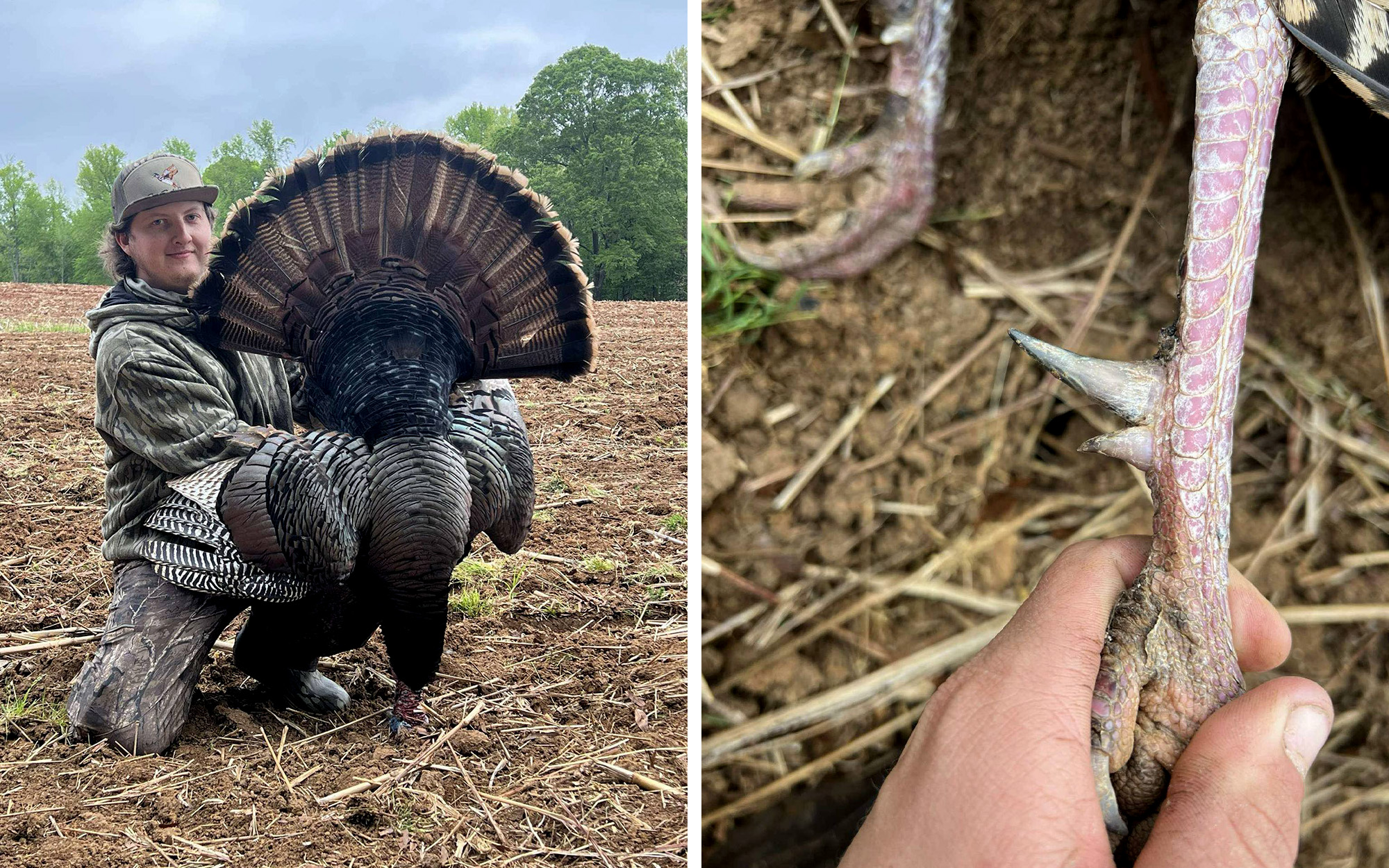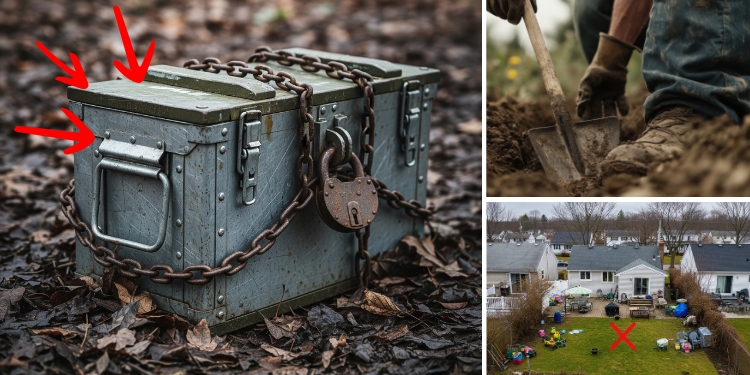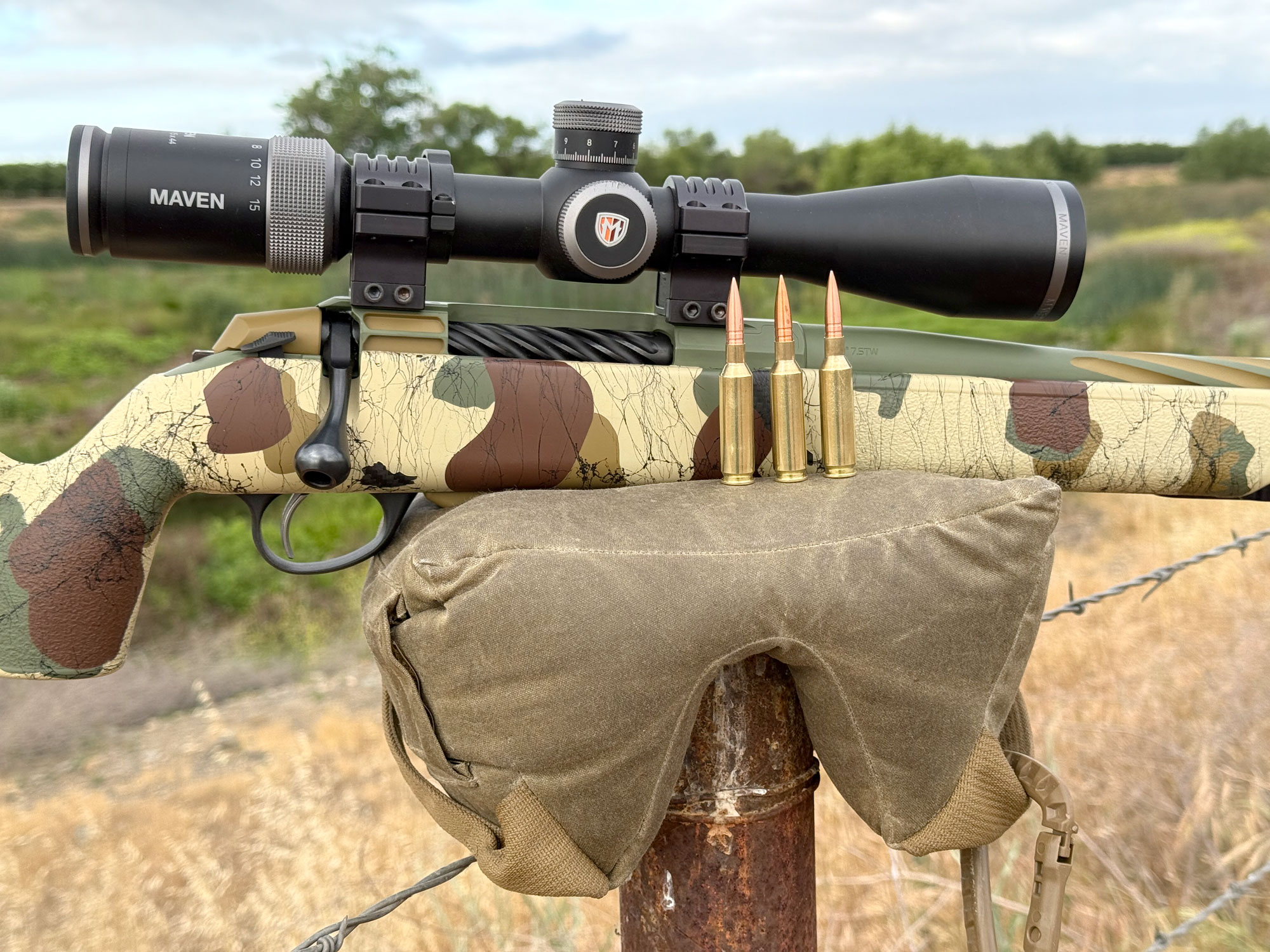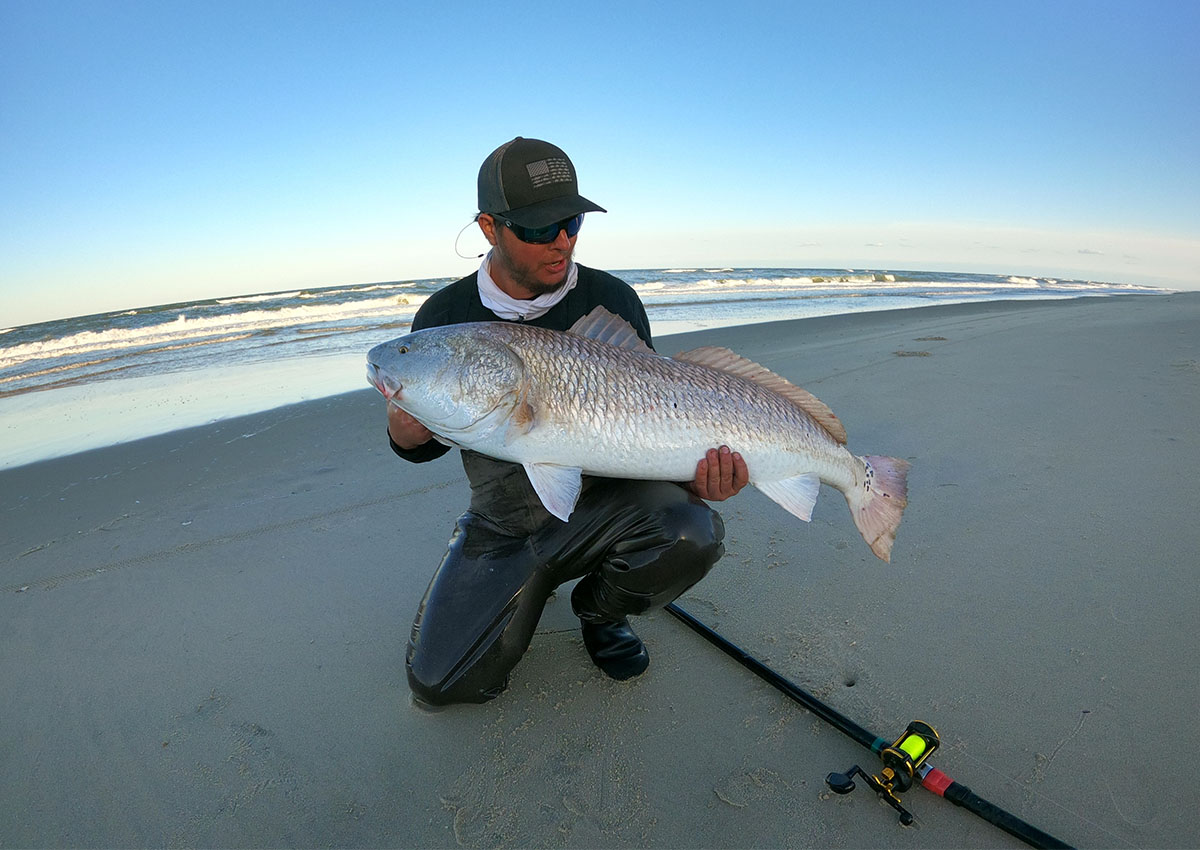Hunter Tags Double-Spurred Gobbler

Before dawn on April 19 Daniel Maness and his good friend Chris Morris were owl-hooting on a hunt club where Maness had seen turkeys during deer season. The club sat on 300 acres in west-central North Carolina’s Chatham County.
“I’m new to turkey hunting, but Chris was showing me how it’s done,” Maness tells Outdoor Life. “He owl hooted a couple times, and we had gobblers answer right away.”
The young hunters headed 50 yards toward the gobbling birds, which they guessed were only 100 yards away. They put out a hen decoy and Morris did the calling on a slate pot call, while Maness sat ready as the shooter.
One gobbler flew down and made for their decoy. But then a pair of hens flew off the roost with the second gobbler, landing nearby — then pulling the first tom away, too. The whole group disappeared into the pines.
“We heard five different gobblers that morning,” said Maness, a machine shop worker in Robbins. “So, Chris said we should pick up and work our way through the woods toward where we heard other birds and locate another tom.”
Read Next: How to Decoy Turkeys, Advanced Tactics with Mark Drury
The buddies slipped through timber and open fields, calling as they went, hoping to strike a tom.
“Finally, Chris called, and a tom gobbled,” said Maness. “Chris called a second time, and this time two different birds gobbled back at us.”
They moved closer to where they’d heard the toms and set up a second time. They were just inside another field edge, and they placed a single hen decoy out front.
Morris yelped and purred on his slate, but it was quiet for more than 20 minutes. Then they heard another gobbler from behind them — toward the area where they’d seen the birds fly down earlier that morning.
“So, we left and headed back in the direction we’d come from, thinking that’s where the hens were — and likely the gobblers, too,” Maness said. “We were moving slowly, staying quiet, and we spotted a tom strutting in a clearing about 70 yards from us.”
The pair of hunters used a low ditch for cover and were able to cut the distance to the strutter.
“We got to about 40 yards from him, I eased up out of the ditch, I put my sight on his head and fired. The bird ran a few yards, I shot again, and he dropped right there.”
When he walked up on his bird, Maness noticed it had a pair of spurs on each leg.
“I knew that wasn’t normal, and Chris said he’d never seen a bird with four spurs.”
The 21.7-pound tom with a 10.4-inch beard was indeed a rarity. Each of its legs had a 1 3/8-inch spur, plus another 5/8-inch spur beside the first one.
Gobblers with multiple sets of spurs are truly rare. According to the National Wild Turkey Federation, around one percent of toms have multiple spurs. The late and renowned Florida turkey biologist Lovett Williams once said that he knew of fewer than two dozen gobblers having double spurs.
Read Next: ‘Never in a Million Years.’ Turkey Hunter Tags Banded Gobbler in Oklahoma
In the time since he tagged his double-spurred tom in April, Maness has taken another big gobbler. His second bird was called to the gun by Morris as well. The 21-pound tom had an 11-inch beard and 1.25-inch spurs, and Maness says it put on a real show, strutting and gobbling up until he pulled the trigger.
“Everyone calls me lucky,” he says, chuckling.
Read the full article here







